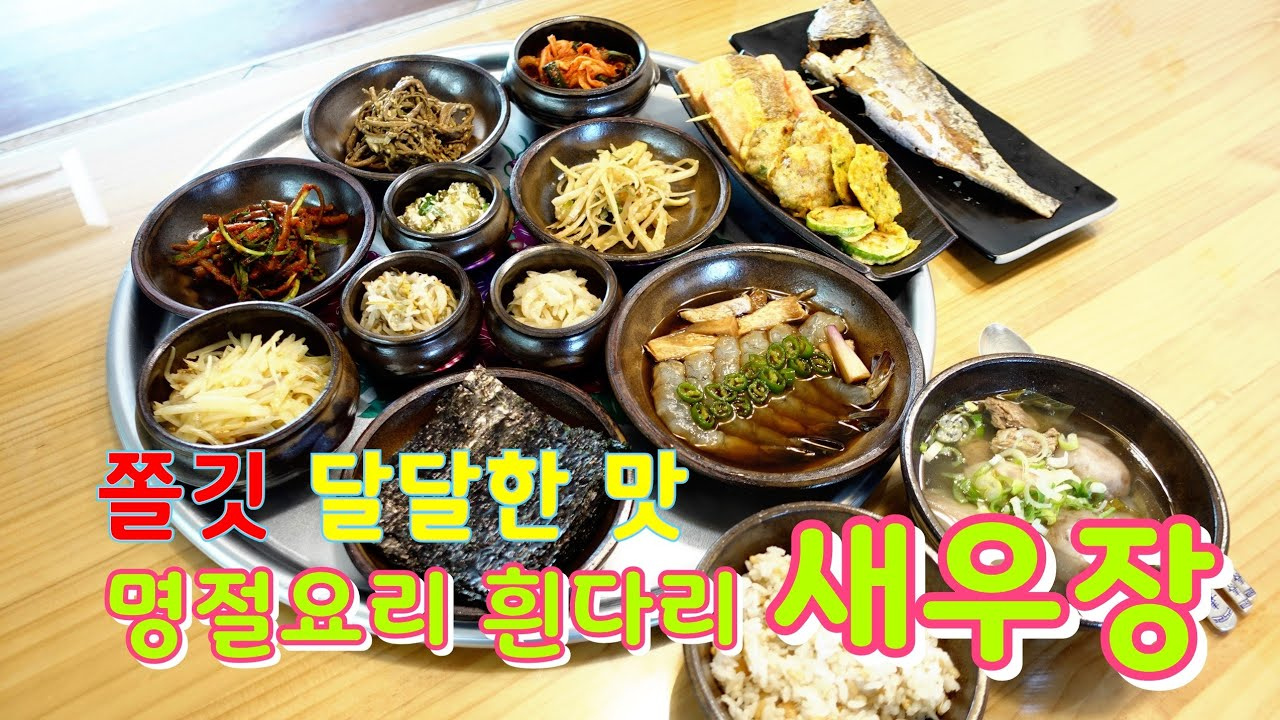Chewy & Sweet! The Perfect Non-Salty Shrimp Jang Recipe
Homemade Non-Salty Shrimp Jang with Seasonal Domestic Whiteleg Shrimp

This recipe brings you the delightful taste of fresh, seasonal domestic whiteleg shrimp transformed into a delicious shrimp jang (marinated shrimp). I initially planned to make only soy-marinated crabs but couldn’t resist the temptation of making shrimp jang again! The memory of the wonderfully chewy and sweet taste from the whiteleg shrimp I made last spring lingered, which is why I chose them again. The shrimp arrived fresh directly from the producer, perfect for immediate marinating. This time, I experimented with a slightly different soy sauce marinade recipe. It’s truly amazing how a single change in seasoning can transform a dish; cooking feels like magic! I was incredibly curious to see how this new marinade would taste, and wow, it’s unbelievably delicious! The plump, chewy texture of the shrimp, combined with the perfectly balanced, non-salty soy sauce that has gently permeated them, creates an extraordinary flavor. This shrimp jang is so good, you can eat it on its own without rice, thanks to its chewy texture and the perfectly seasoned, non-salty sauce. Enjoy making this wonderful seasonal dish! Stay healthy and happy today! ♡
Shrimp Jang Ingredients- 47 fresh Whiteleg Shrimp (cleaned)
- 1 Onion (thickly sliced)
- 5 Cheongyang Peppers (sliced diagonally)
- 20 cloves Garlic (whole or thinly sliced)
- 1/4 cup Plum Extract (Maesilcheong)
- 1/2 cup Soju (or cooking wine)
Secret Soy Sauce Marinade- 1.8L Water
- 1/2 cup Anchovy Broth Base (for umami)
- 1+1/2 cups Soy Sauce
- 1 cup Sugar (adjust to taste)
- 1.8L Water
- 1/2 cup Anchovy Broth Base (for umami)
- 1+1/2 cups Soy Sauce
- 1 cup Sugar (adjust to taste)
Cooking Instructions
Step 1
First, carefully prepare the fresh whiteleg shrimp. Gently rinse the shrimp under running water. Trim off the sharp pointy parts of the tail and the horns from the head. Using a toothpick, carefully remove the black vein from the back. You can leave the tail shell on or remove it completely, according to your preference. After cleaning, pat the shrimp dry.

Step 2
Arrange the cleaned shrimp in a kimchi container or an airtight storage box. It’s important to place them in a single layer without overlapping. Pour 1/2 cup of soju evenly over the shrimp; this helps to eliminate any fishy odor and enhance the flavor. Add 1/4 cup of plum extract as well.

Step 3
Now, let’s make the secret soy sauce marinade for the shrimp jang. In a pot, combine 1.8L of water, 1+1/2 cups of soy sauce, 1 cup of sugar, and 1/2 cup of anchovy broth base. Mix everything well. You can adjust the amount of sugar to your preferred sweetness.

Step 4
Bring the soy sauce mixture to a boil over high heat. Once boiling, reduce the heat to medium-low and simmer for about 5 minutes. This simmering process deepens the flavor of the soy sauce and removes any impurities, resulting in a cleaner taste. It is crucial to let the cooked soy sauce cool down completely. Pouring hot sauce over the shrimp can affect their freshness, so ensure it’s cooled to room temperature or colder.

Step 5
Prepare the additional ingredients to be marinated with the shrimp. Slice the onion thickly and slice the Cheongyang peppers diagonally. The whole garlic cloves can be used as they are, or thinly sliced. These ingredients will add flavor and depth as they marinate with the shrimp.

Step 6
Add the prepared onion, Cheongyang peppers, and garlic to the container with the shrimp. Marinating the shrimp with these vegetables helps to balance the saltiness of the shrimp jang and infuses the shrimp with their refreshing taste and aroma, making them even more delicious.

Step 7
Pour the completely cooled secret soy sauce marinade over the shrimp and vegetables, ensuring they are fully submerged. If there isn’t enough marinade to cover everything, the shrimp exposed to air could spoil. Therefore, it’s best to use a generous amount of the sauce.

Step 8
Seal the container tightly and refrigerate in a kimchi refrigerator for about 3 days to allow it to mature. A kimchi refrigerator maintains a consistent temperature, which is ideal for fermenting shrimp jang perfectly. After 3 days, arrange the shrimp and vegetables attractively in a serving dish. Your chewy and non-salty delicious shrimp jang is ready to be enjoyed! It’s perfect as a side dish with rice or as a snack with drinks.



